How to Create a DIY Footstool for Your Living Room
Are you looking to add a touch of personality and comfort to your living room? A DIY footstool can be the perfect solution! Not only does it provide a cozy spot to rest your feet after a long day, but it also serves as a stylish accent piece that can elevate the overall aesthetic of your space. In this article, we will guide you through the exciting journey of creating your own footstool, from choosing the right materials to the final finishing touches. So, grab your tools and let’s get started on crafting a piece that’s uniquely yours!
When it comes to building your DIY footstool, selecting the right materials is absolutely crucial. The durability and aesthetic appeal of your footstool hinge on this initial choice. Start by exploring various fabric options—think about textures and colors that resonate with your living room decor. For instance, if your room has a modern vibe, a sleek faux leather might be ideal, whereas a cozy, patterned fabric could suit a more rustic setting.
Next, consider the type of wood for the frame. Popular choices include pine for its affordability and ease of use, or oak for a more robust and enduring structure. Don't forget about padding materials, as they play a significant role in comfort. High-density foam is a fantastic option for a plush feel, while cotton batting can provide a softer touch. Ultimately, your choices should reflect both your personal style and the functionality you desire.
Accurate measurements are the backbone of a well-proportioned footstool. Before diving into the construction, take some time to sketch out your design. This will help you visualize the final product and ensure it fits seamlessly into your living space. Start by determining the dimensions that suit your needs—consider how high you want the footstool to be and how much surface area you need for comfort.
Creating a detailed sketch can be a game changer. It’s like mapping out a treasure hunt; with a clear plan in hand, you're less likely to veer off course. Aim to draw your design to scale, marking out dimensions and proportions accurately. This will not only help you in the construction phase but also give you a clearer idea of how the footstool will look in your living room.
Why not make your footstool work double duty? Incorporating storage into your design can be a brilliant way to enhance functionality without sacrificing style. Imagine a footstool that opens up to reveal a hidden compartment for blankets or magazines. This clever addition can help keep your living room tidy and organized, all while providing a cozy place to rest your feet.
Your footstool should reflect the overall aesthetic of your living room. Whether you lean towards modern, rustic, or traditional styles, understanding how different design elements contribute to the overall look is essential. For example, a minimalist footstool with clean lines can complement a contemporary space, while a tufted design might add a touch of elegance to a classic setting.
Before you grab those tools, take a moment to finalize your design. Review your material choices and dimensions to ensure everything aligns with your vision and lifestyle needs. This step is crucial; you want to make sure your footstool not only looks great but also fits perfectly into your daily routine.
Now that you have your design locked in, it’s time to roll up your sleeves and get to work! Follow this detailed step-by-step guide to construct your footstool, covering everything from cutting and assembling to finishing techniques that will leave you with a professional-looking result.
Start by safely and accurately cutting the wood for your footstool frame. Proper techniques and tools are key here; using a miter saw can help ensure clean edges and precise dimensions. Remember, measure twice, cut once! This old adage rings true, as careful cutting will save you time and frustration later on.
With your pieces cut, it’s time to assemble your footstool frame. Stability is paramount here, so explore various joining methods like dowels, screws, or wood glue. Each method has its benefits, but the goal is to create a sturdy construction that will stand the test of time. Don’t rush this process; take your time to ensure everything fits snugly together.
Upholstering is where you can truly express your creativity. This is your chance to add fabric that reflects your personal style! Explore different techniques for adding fabric, whether it’s stapling or sewing, to achieve a polished finish that enhances your footstool's appearance.
Choosing the right upholstery fabric is vital for both durability and style. Look into fabric types, patterns, and colors that can elevate your footstool's design. If you have kids or pets, consider fabrics that are easy to clean and resistant to stains.
Padding adds comfort and shape to your footstool. Discover various padding materials such as foam, batting, or even recycled materials, and learn techniques for achieving the desired softness and support for your feet. The right padding can make all the difference in how your footstool feels when you put your feet up after a long day.
The finishing touches can truly elevate your DIY footstool. This is where you can get creative with painting, staining, or adding decorative elements to personalize your piece. Whether you opt for a bold color or a subtle stain, these final details can make your footstool a standout addition to your living room.
Consider embellishments like trims, buttons, or decorative legs to enhance your footstool's design. These small details can have a significant impact on the overall look and feel of your piece, turning a simple footstool into a conversation starter.
Finally, learn how to protect your footstool from wear and tear. Explore options for sealing, cleaning, and maintaining your footstool to ensure it remains beautiful for years to come. After all, you’ve put in the work to create something special; it deserves to be cared for!
- What materials do I need to build a footstool? You will need wood for the frame, upholstery fabric, padding materials, and tools like a saw and stapler.
- How long does it take to make a DIY footstool? Depending on your experience and the complexity of your design, it can take anywhere from a few hours to a couple of days.
- Can I customize the size of my footstool? Absolutely! One of the great benefits of a DIY project is that you can tailor the dimensions to fit your space perfectly.

Choosing the Right Materials
When it comes to creating a DIY footstool, is crucial for both durability and aesthetics. You want your footstool to not only look good but also stand the test of time, right? Think of it like building a house; you wouldn’t use flimsy materials for the foundation! So, let’s dive into the various components you’ll need.
First up is the frame material. The most common choices include hardwoods like oak or maple, which provide excellent stability and strength. If you're looking for something more budget-friendly, plywood can be a great alternative, offering decent durability while being lighter. Here’s a quick comparison:
| Material | Durability | Cost | Weight |
|---|---|---|---|
| Hardwood | High | $$$ | Heavy |
| Plywood | Moderate | $$ | Light |
Next, let’s talk about upholstery fabric. This is where you can really inject your personality into the design! You’ll want to select a fabric that not only matches your living room decor but is also durable enough to withstand everyday use. Options like canvas or denim are great for a casual look, while velvet or linen can add a touch of elegance. Consider these fabric types:
- Canvas: Durable and easy to clean.
- Denim: Casual and sturdy, perfect for a laid-back vibe.
- Velvet: Luxurious and soft, ideal for a more sophisticated touch.
- Linen: Breathable and stylish, but may require more maintenance.
Don’t forget about the padding too! This is what will make your footstool comfortable for resting your tired feet after a long day. Foam padding is a popular choice due to its resilience and comfort, while polyester fiberfill offers a softer feel. When selecting padding, think about the thickness and density you prefer. A thicker, denser foam will provide more support, while a softer option will feel plush and cozy.
In summary, the materials you choose for your DIY footstool can significantly affect its overall look and functionality. By carefully selecting the frame, upholstery fabric, and padding, you can create a piece that not only fits your style but also serves its purpose beautifully. Ready to roll up your sleeves and get started? Let’s move on to the next step!
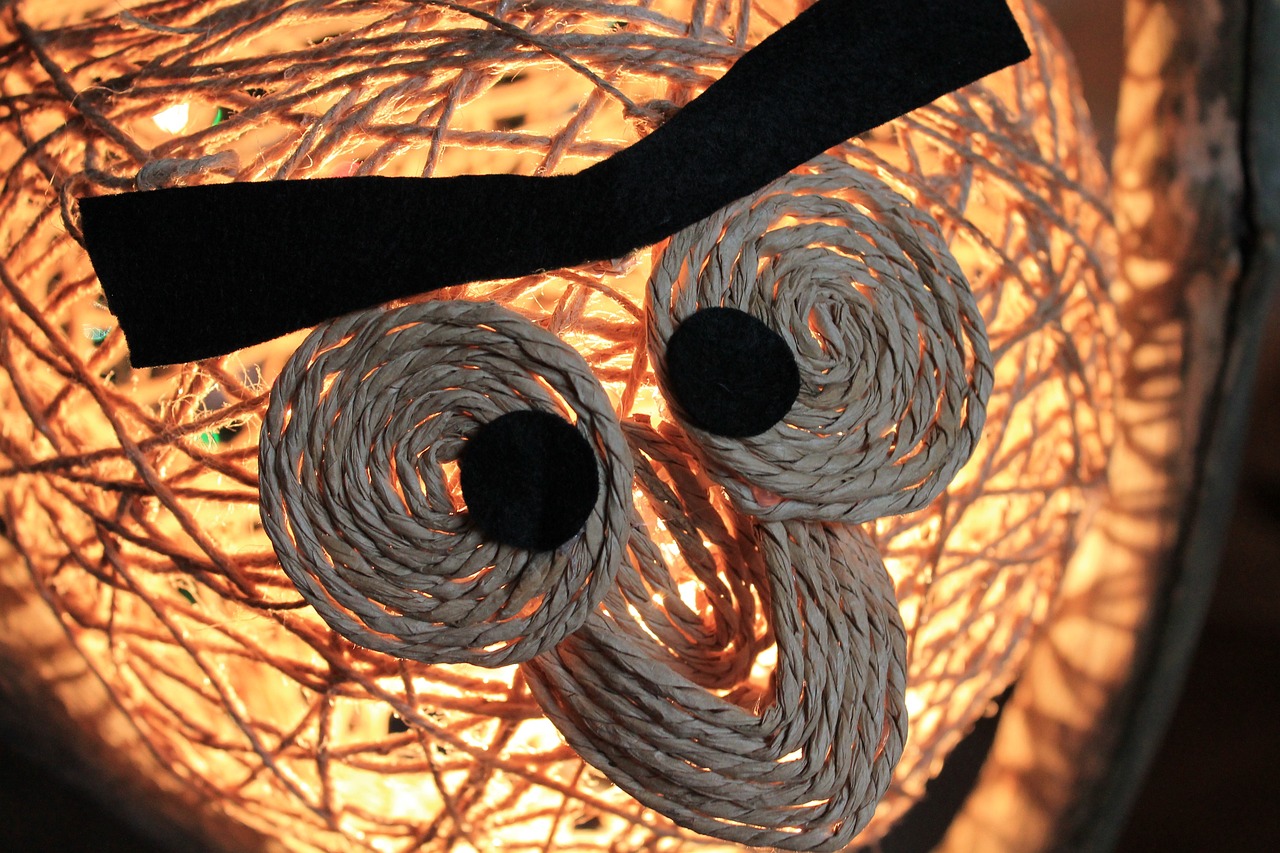
Measuring and Planning Your Design
When it comes to creating a DIY footstool, is the foundation upon which your entire project rests. Think of it as laying the groundwork for a house; without a solid foundation, everything else can crumble. Start by determining the dimensions that will suit your space and personal style. This means considering not only the height and width of the footstool but also how it will fit in with the surrounding furniture. Will it be a cozy addition to your living room, or a statement piece that steals the show?
To get started, grab a measuring tape and take note of the available space in your living room. Here are some key measurements to consider:
- Height: The footstool should be low enough to comfortably rest your feet but high enough to be functional.
- Width: Ensure it’s wide enough for comfort, especially if you plan to share it with others.
- Depth: A deeper footstool can provide more comfort but may take up more space.
Next, sketch out your design. This doesn’t have to be a masterpiece; a simple drawing will do. Focus on how you want the overall shape to look. Are you envisioning a sleek, modern rectangle or a cozy, rounded design? A well-thought-out sketch will help you visualize the final product and guide your construction process. Remember, this is your chance to let your creativity shine!
Creating a detailed sketch can help visualize the final product. When sketching, keep in mind the scale of your footstool in relation to the other furniture in your living room. To make this easier, consider using graph paper or software that allows for precise measurements. Include dimensions directly on your sketch to avoid confusion later on. If you’re unsure about the proportions, it can be helpful to refer to existing furniture pieces for guidance.
One of the most practical features you can add to your footstool is storage. Imagine having a cozy place to rest your feet while also hiding away blankets or magazines! When planning your design, think about how you can incorporate hidden compartments. This could involve a removable top or a lift-up seat. Not only does this enhance functionality, but it also keeps your living space tidy and organized.
Your footstool should reflect the overall style of your living room. Whether you’re going for a modern, rustic, or traditional vibe, the design elements you choose will play a significant role. For instance, if your living room features clean lines and minimalistic decor, a simple, upholstered footstool with a sleek finish will blend beautifully. On the other hand, if you have a more eclectic space, don’t shy away from bold colors or unique patterns that can add a fun touch to your decor.
Finally, before you dive into construction, take a moment to review all your choices. Ensure that your material selections, dimensions, and design elements align with your vision and lifestyle needs. This is your footstool, after all! It should not only be a functional piece but also a reflection of your personal style.
Q: What tools do I need to start building my footstool?
A: Essential tools include a saw, drill, measuring tape, and staple gun. Safety goggles are also recommended!
Q: Can I use recycled materials for my footstool?
A: Absolutely! Using recycled materials can add character and is a great way to be eco-friendly.
Q: How do I choose the right upholstery fabric?
A: Look for durable fabrics that suit your style. Consider factors like color, pattern, and texture to enhance your footstool's appeal.
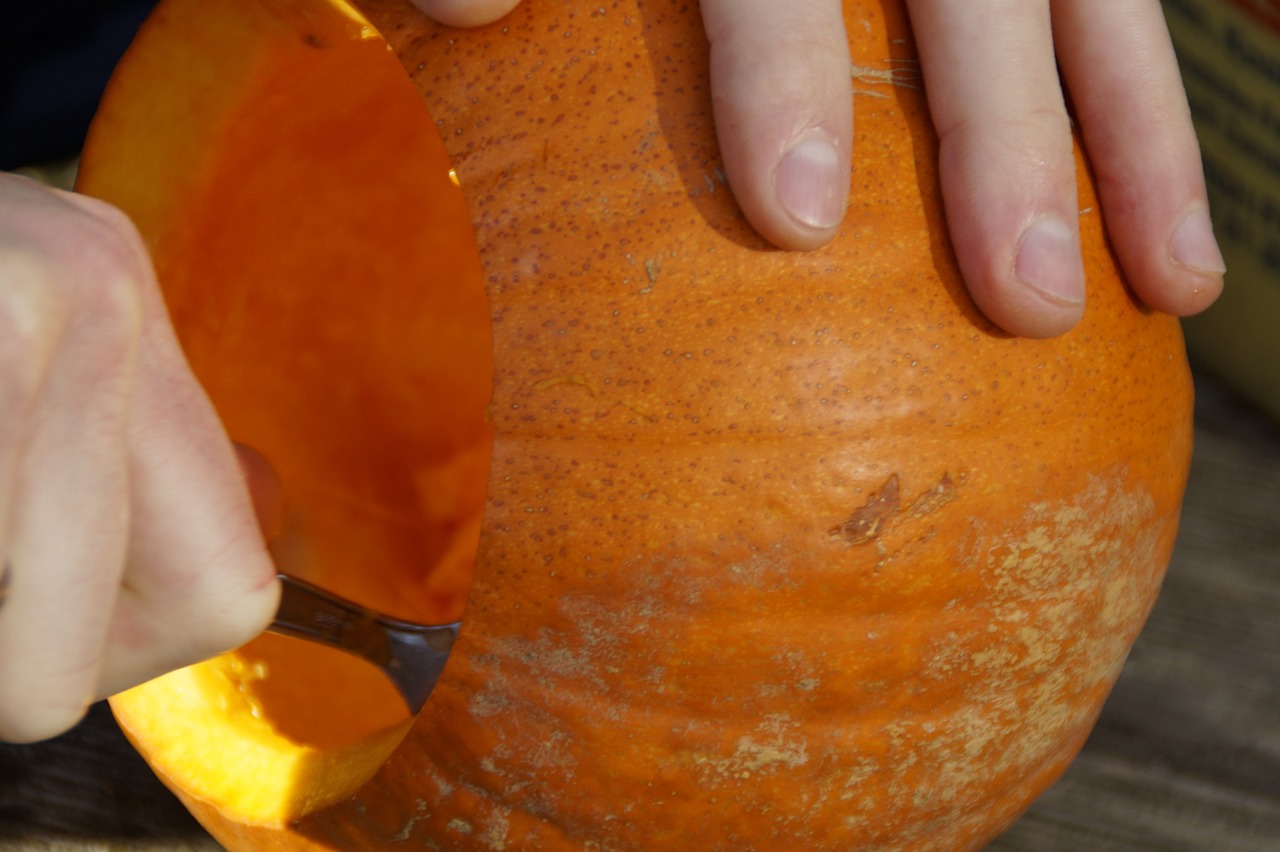
Sketching Your Footstool
Sketching your footstool is more than just putting pencil to paper; it's about visualizing your dream piece and ensuring that every measurement is on point. Think of your sketch as a blueprint, guiding you through the construction process. Start by gathering your materials: a ruler, a pencil, and a good eraser. You might also want some graph paper to help keep your proportions accurate. When you begin sketching, consider the overall shape of your footstool. Will it be a simple rectangular design, or do you want to add some curves for a more modern touch? The choice is yours!
Next, focus on the dimensions. It’s crucial to measure the space where your footstool will live. You wouldn’t want to create a stunning piece only to find it’s too big or too small for your living room. A standard footstool size might be around 18 inches high and 24 inches wide, but feel free to adjust these measurements to fit your personal style and comfort. As you sketch, make sure to note down these dimensions clearly. Here’s a simple table to help you visualize the common dimensions:
| Dimension | Standard Size (inches) |
|---|---|
| Height | 18 |
| Width | 24 |
| Depth | 18 |
While sketching, keep in mind the style you want to achieve. Do you envision a modern minimalist look or a cozy, rustic charm? Incorporating these elements into your sketch can help create a cohesive design. If you’re feeling adventurous, consider adding some unique features like angled legs or a tufted top. These details can elevate your footstool from ordinary to extraordinary!
Finally, don’t forget to add annotations to your sketch. Label important features, note the materials you plan to use, and indicate where you might want to incorporate storage. This will not only clarify your vision but also serve as a handy reference when you start building. Remember, the more detailed your sketch, the smoother the construction process will be. Happy sketching!
- How do I choose the right size for my footstool? Measure the space where it will be used and consider your comfort preferences.
- Can I use recycled materials for my footstool? Absolutely! Recycled wood and fabric can add a unique touch and are eco-friendly.
- What type of fabric is best for upholstery? Look for durable fabrics like canvas or upholstery-grade materials that can withstand wear and tear.
- How can I ensure my footstool is stable? Use quality wood and secure joints during assembly to enhance stability.
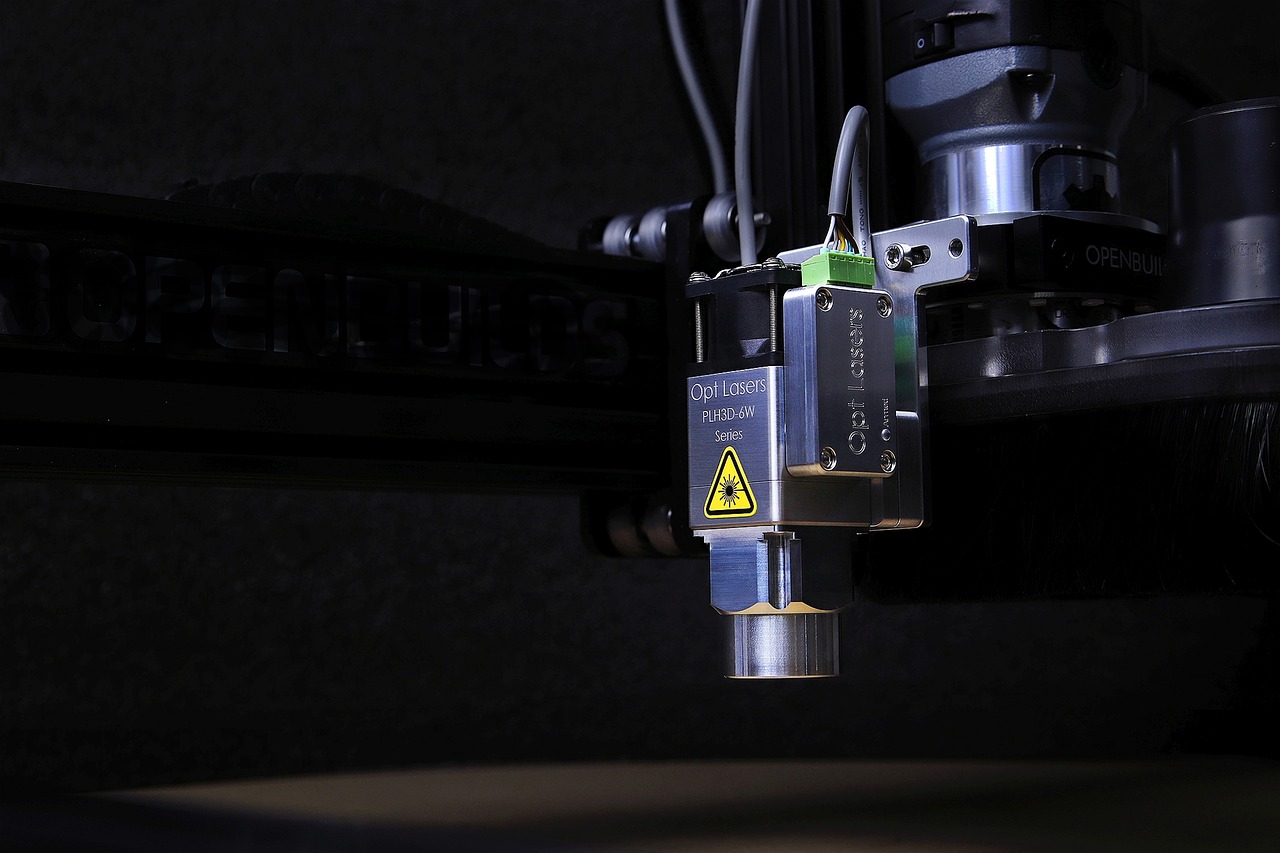
Incorporating Storage
When it comes to creating a DIY footstool, why not take it a step further and incorporate some storage solutions? This clever addition can transform your footstool from a simple piece of furniture into a multifunctional gem that keeps your living space organized and stylish. Imagine having a cozy footrest that also hides away your magazines, blankets, or even your favorite board games! It’s like having your cake and eating it too, right?
There are several design options to consider when adding storage to your footstool. One popular method is to create a lift-top design. This allows the top of the footstool to lift up, revealing a spacious compartment inside. You can achieve this by using hinges that attach the top to the base, making it easy to access the items you store inside. Alternatively, you could opt for a drawer-style footstool. This involves building a drawer that slides out from the side or front of the footstool, offering a more traditional storage solution. Both designs are practical and can be tailored to fit your personal style.
To help you visualize the possibilities, here’s a quick comparison of the two storage options:
| Feature | Lift-Top Design | Drawer-Style Design |
|---|---|---|
| Accessibility | Easy access from the top | Access from the side or front |
| Storage Space | Typically larger compartment | Limited by drawer size |
| Complexity | Moderate complexity in construction | More straightforward to build |
Additionally, consider incorporating smaller compartments within your footstool for better organization. For instance, you could add dividers inside the storage space to keep items separated and easy to find. This is especially useful if you plan to store various items, such as remote controls, coasters, or snacks. The key is to think about what you’ll be storing and design accordingly.
Ultimately, incorporating storage into your DIY footstool not only enhances its functionality but also adds a layer of creativity to your design. Think outside the box and let your imagination run wild! With the right approach, your footstool can become a stylish centerpiece in your living room while serving practical purposes that keep your space clutter-free.

Choosing a Style
When it comes to selecting a style for your DIY footstool, it's essential to consider the overall aesthetic of your living room. Your footstool should not only serve a functional purpose but also act as a design statement. The style you choose can significantly impact the ambiance of your space. Are you leaning towards a more modern vibe, or do you prefer something that feels rustic and cozy? The possibilities are endless!
To make the decision easier, think about the existing elements in your living room. Take a moment to assess your furniture, color scheme, and decor. For instance, if your living room features sleek lines and a neutral palette, a footstool with a contemporary design could complement it beautifully. On the other hand, if your space is filled with warm woods and soft fabrics, a traditional or farmhouse-style footstool might be just what you need to tie everything together.
Here are a few styles to consider:
- Modern: Characterized by clean lines, minimalistic design, and bold colors. Think geometric shapes and vibrant fabrics.
- Rustic: Features natural materials like wood and burlap. This style brings warmth and a homely feel to your living area.
- Traditional: Often includes ornate details, classic fabrics, and rich colors. It exudes elegance and sophistication.
- Bohemian: A free-spirited style that embraces eclectic patterns, textures, and colors. Perfect for those who love to mix and match!
Choosing the right style is not just about aesthetics; it’s also about how the footstool will fit into your lifestyle. For example, if you have kids or pets, a durable and easy-to-clean fabric is crucial. On the flip side, if you’re looking to create a chic, adult-only space, you might want to opt for luxurious materials that scream elegance.
Finally, don’t forget to infuse your personality into the design. Whether it's a pop of color that resonates with you or a unique texture that catches your eye, your footstool should reflect who you are. Remember, this is not just a piece of furniture; it’s an extension of your style and a way to express your creativity!
Q: What style should I choose for my footstool?
A: Consider the existing decor of your living room. Match the footstool style with your furniture and color scheme to create a cohesive look.
Q: Can I mix different styles?
A: Absolutely! Mixing styles can create a unique and personalized look. Just ensure that the colors and materials complement each other.
Q: What materials are best for durability?
A: For durability, consider fabrics like canvas, leather, or synthetic materials. These are often easier to clean and maintain, especially in high-traffic areas.

Finalizing Your Design
Before diving into the construction of your DIY footstool, it’s essential to take a moment to finalize your design. This step is not just about ensuring that your footstool looks good; it’s about making sure it fits seamlessly into your living space and meets your practical needs. Start by reviewing your material choices and dimensions. Have you chosen a fabric that not only matches your decor but is also durable enough to withstand daily use? Consider how the colors and textures will interact with the rest of your living room.
Next, think about the dimensions. Have you measured your space accurately? A footstool that’s too large can overwhelm a small room, while one that’s too small might not serve its purpose effectively. Use a measuring tape to double-check the height, width, and depth, and don’t forget to account for any additional features, like storage compartments. Sketching your design on paper can be incredibly helpful here; it allows you to visualize the final product and make any necessary adjustments before you start building.
Another critical aspect to consider is functionality. Will your footstool serve merely as a place to rest your feet, or do you envision it as a multi-functional piece? If you’re leaning towards functionality, think about incorporating hidden storage. This not only adds utility but can also keep your living area tidy. You can create compartments for magazines, blankets, or even remote controls.
Finally, ensure that your design aligns with your personal style. Whether you’re drawn to a modern aesthetic with clean lines or a rustic charm with textured fabrics, your footstool should reflect your taste. Don’t hesitate to explore various styles and elements that can enhance your design. A well-thought-out footstool can be a stunning focal point in your living room.
In summary, finalizing your design is about the balance of aesthetics and functionality. Take your time to consider all aspects, from materials to dimensions, and ensure that your footstool will not only look great but also serve its purpose effectively. This thorough preparation will set the stage for a successful DIY project that you will be proud to showcase in your home.
- What materials do I need to create a footstool? You'll need wood for the frame, upholstery fabric, padding, and any decorative elements you wish to include.
- How do I ensure my footstool is sturdy? Focus on using quality materials and proper joining techniques during assembly. Reinforce joints with screws or brackets for added stability.
- Can I customize the size of my footstool? Absolutely! Just make sure to measure your space and adjust your design accordingly.
- What type of fabric is best for upholstery? Look for durable fabrics that can withstand wear and tear, such as canvas, denim, or upholstery-grade polyester.
- How do I maintain my footstool? Regularly clean your footstool according to the fabric type, and consider applying a protective sealant if it’s made of wood.
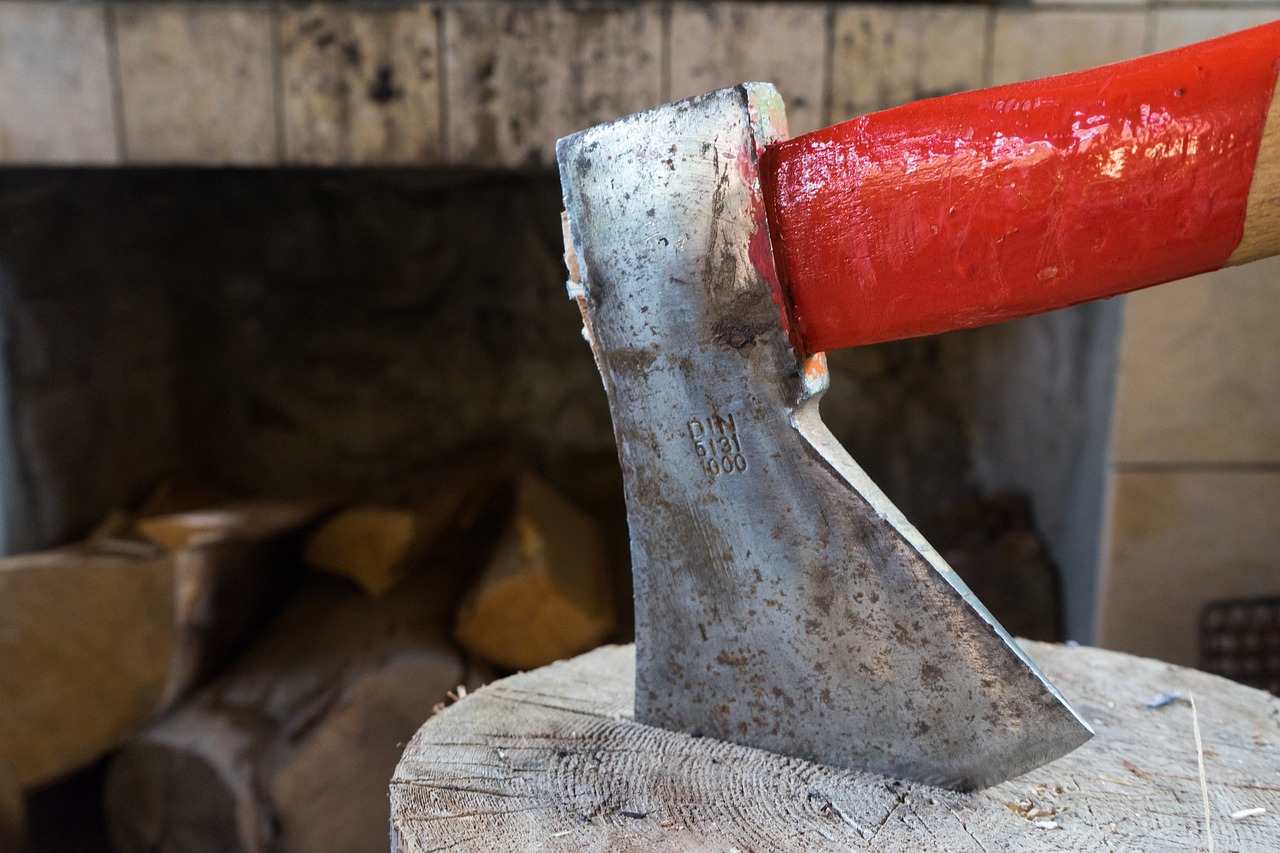
Step-by-Step Construction Process
Creating your very own DIY footstool can be an exhilarating journey, and the construction process is where the magic really happens! This section will guide you through each step, ensuring that you not only create a functional piece but also enjoy the process. The first thing to remember is that preparation is key; having all your materials ready will make the construction smoother and more enjoyable.
Begin by gathering your materials, which typically include wood for the frame, upholstery fabric, padding, and any decorative elements you wish to incorporate. Make sure you have the necessary tools, such as a saw, drill, measuring tape, and staple gun. Having everything at your fingertips will save you from unnecessary interruptions. Once you have everything, it’s time to dive into the fun part: construction!
The first step in the construction process is cutting the wood. Using your measurements from the planning phase, carefully cut the wood pieces for your footstool frame. It's crucial to ensure that your cuts are straight and precise; this will not only make assembly easier but also contribute to the overall stability of your footstool. If you're unsure about your cutting skills, consider practicing on scrap wood first. Remember, safety comes first, so always wear protective gear!
Once your wood pieces are cut, the next step is assembling the frame. This is where you’ll bring your footstool to life! Start by laying out the pieces according to your design. Use wood glue and screws or dowels to join the pieces together, ensuring that everything is aligned properly. A sturdy frame is essential, as it will support both the padding and the upholstery. Don't rush this step—take your time to ensure everything is secure and stable.
After the frame is assembled, it’s time to add the padding. This step is where you can really get creative! Choose your padding material based on how soft or firm you want your footstool to be. Cut the padding to size and attach it to the top of the frame using a staple gun. Make sure the padding is evenly distributed to avoid any uncomfortable lumps. This is the part that will make your footstool cozy and inviting, so don’t skimp on quality!
Finally, we arrive at the upholstery stage. This is where your footstool will truly shine! Lay your upholstery fabric over the padded top, ensuring it covers all sides of the padding. Pull the fabric taut and staple it securely to the underside of the frame. Take your time to smooth out any wrinkles or bubbles, as a neat finish will make a world of difference in the final look of your footstool. Once you’re satisfied with the upholstery, trim any excess fabric, and voilà! You have a beautiful DIY footstool.
As you wrap up this construction process, remember that the journey doesn't end here. The finishing touches can elevate your DIY footstool even further, making it a unique piece that reflects your personal style. Consider adding decorative elements such as trims or buttons to give your footstool that extra flair. And don't forget to protect your masterpiece from wear and tear by applying a suitable sealant or protective finish.
Q: How long does it take to build a DIY footstool?
A: The time it takes can vary depending on your experience level and the complexity of your design, but typically it can take anywhere from a few hours to a whole weekend.
Q: What type of wood should I use for the frame?
A: Softwoods like pine are great for beginners due to their ease of use, while hardwoods like oak or maple offer more durability and a polished look.
Q: Can I customize the size of my footstool?
A: Absolutely! One of the best parts of a DIY project is that you can tailor it to fit your specific needs and space.
Q: What if I'm not good at sewing?
A: No worries! Upholstering can be done with a staple gun, and there are plenty of no-sew fabric options available that can make your project easier.

Cutting the Wood
When it comes to creating your DIY footstool, the first step is arguably one of the most crucial: cutting the wood. It's like the foundation of a house; if it's not solid, everything else can crumble. To start, gather your materials and tools. You'll need some quality wood, a saw (circular or miter saw works great), a measuring tape, and safety goggles. Remember, safety first! You don’t want to end up with a splinter or worse.
Before you even think about making a cut, measure twice, cut once—a mantra that can save you from a lot of headaches. Take your time to measure the dimensions of your footstool frame accurately. If you’re following a specific design, refer to your sketch and ensure your measurements align perfectly. For example, if your footstool is going to be 18 inches high and 24 inches wide, write down those dimensions. Having a clear plan will prevent any mistakes that could lead to wasted materials.
Once you’re ready to cut, place your wood on a stable surface. If you’re using a circular saw, ensure it’s set to the right depth to avoid cutting too deep. For straight cuts, a guide can be your best friend. You can create a simple guide by clamping a straight piece of wood along your cut line. This will help keep your saw steady and ensure a clean edge. Remember to wear your safety goggles; wood chips can fly, and you want to keep your eyes protected!
As you cut, take your time. Rushing through this step can lead to uneven edges, which will only complicate assembly later on. Once you’ve made all your cuts, take a moment to inspect them. Are they smooth? If not, don’t fret! A little sanding can go a long way. Use sandpaper to smooth out rough edges, making sure everything is comfortable to touch. This step is crucial, especially if your footstool will be used frequently.
To summarize, here are the key steps for cutting the wood for your footstool:
- Gather your materials and tools.
- Measure your wood accurately based on your design.
- Set up a stable cutting area.
- Use a guide for straight cuts.
- Inspect and sand your cuts for smooth edges.
By following these steps, you’ll be well on your way to crafting a solid foundation for your footstool. Remember, patience is key, and each cut brings you closer to that stylish piece of furniture that will elevate your living room. Happy cutting!
Q: What type of wood is best for a footstool?
A: Hardwoods like oak or maple are excellent choices due to their durability. However, softer woods like pine can also work if you're looking for a more budget-friendly option.
Q: How do I ensure my cuts are straight?
A: Using a guide is the best way to ensure straight cuts. You can clamp a straight piece of wood along your cut line to help steady your saw.
Q: Is sanding really necessary?
A: Absolutely! Sanding your cuts not only makes them look better but also ensures safety by removing any sharp edges.
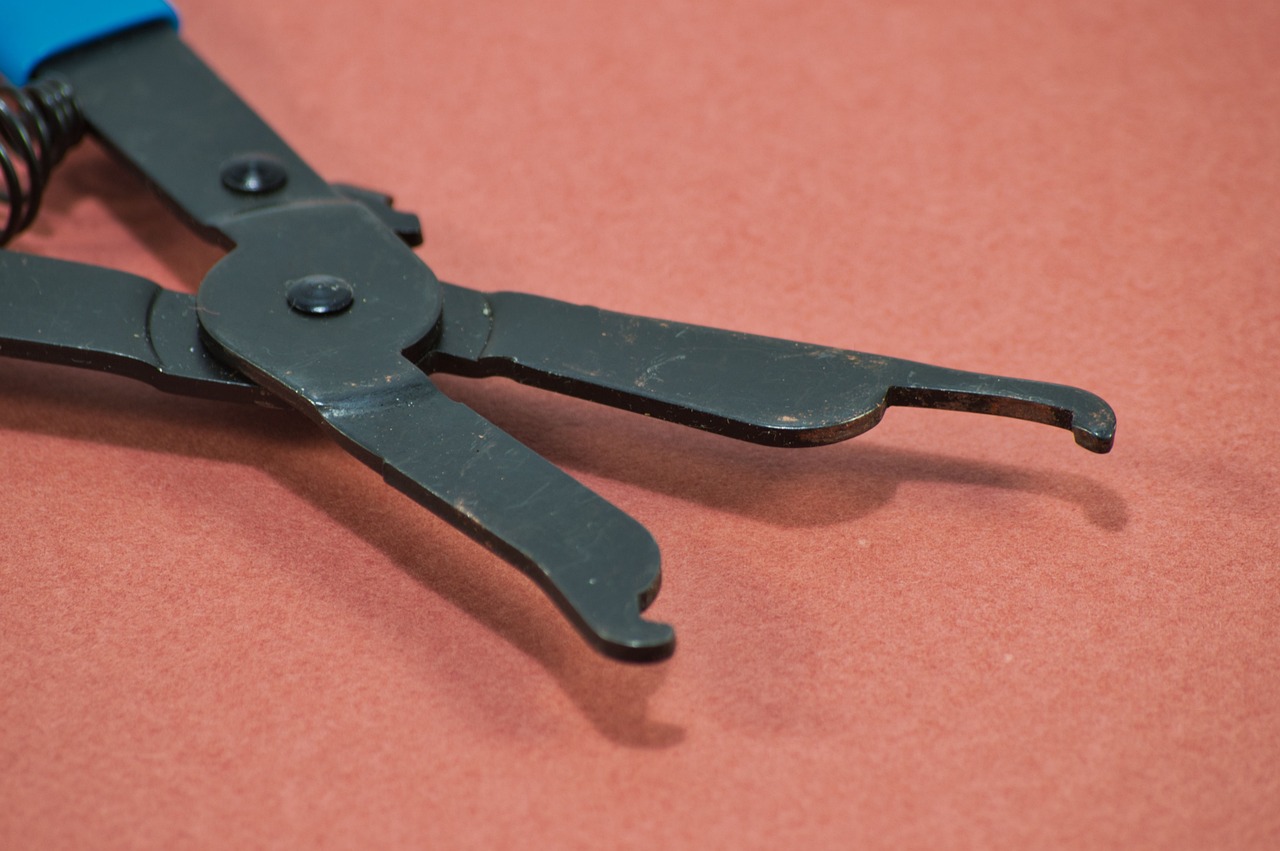
Assembling the Frame
Assembling the frame of your DIY footstool is where the magic truly begins. This is the stage that transforms your carefully cut pieces of wood into a sturdy structure that will support your feet and enhance your living space. Before you dive into assembly, ensure you have all your materials at hand. You’ll need your cut wood pieces, wood glue, screws, and a drill. Having everything organized will save you time and frustration. Now, let's break down the assembly process into manageable steps.
First, it's essential to lay out all the pieces in the order they will be assembled. This visual guide can help you understand how each part fits together. Typically, a footstool frame consists of four legs, a rectangular top, and side supports. Imagine the frame as the skeleton of your footstool; it needs to be strong and well-aligned. Here’s a quick overview of how to assemble the frame:
- Attach the legs: Start by securing the legs to the corners of the top piece. Use wood glue first to hold them in place, then reinforce with screws. Make sure the legs are perpendicular to the top for stability.
- Add side supports: Once the legs are attached, add the side supports between the legs. This will provide additional strength and prevent wobbling. Again, use wood glue followed by screws for a solid hold.
- Check for squareness: After everything is assembled, it’s crucial to check that your frame is square. Use a carpenter's square to ensure that all angles are at 90 degrees. If not, make adjustments before the glue dries.
With the frame assembled, you can now focus on ensuring stability. For added strength, consider using corner brackets or additional support beams, especially if your footstool will bear more weight. Remember, a well-constructed frame is the foundation of a durable footstool.
Finally, take a moment to sand any rough edges and surfaces. This not only enhances the appearance of your footstool but also ensures safety by preventing splinters. A smooth finish will make the upholstery process much easier and more enjoyable. Once you’re satisfied with the frame, you’re ready to move on to the next exciting step: upholstering your footstool!
Q: How long does it take to assemble the frame?
A: The assembly process can take anywhere from 1 to 3 hours, depending on your skill level and whether you encounter any complications.
Q: What type of wood is best for a footstool frame?
A: Hardwoods like oak or maple are great for durability, while softer woods like pine can be used for a lighter, more budget-friendly option.
Q: Do I need special tools for assembly?
A: Basic tools like a drill, screwdriver, and saw are sufficient for most DIY footstool assemblies. However, having a level and a carpenter's square will help ensure accuracy.
Q: Can I customize the height of my footstool?
A: Absolutely! When measuring and cutting your wood, you can adjust the height to suit your personal preference and comfort level.

Upholstering Your Footstool
Upholstering is where you can truly let your creativity shine when crafting your DIY footstool. It’s not just about covering a piece of furniture; it’s about transforming it into a stunning focal point that reflects your personal style. The right upholstery can elevate the entire look of your footstool, making it not only a comfortable resting place for your feet but also a stylish addition to your living room decor.
When it comes to selecting upholstery fabric, you’ll want to consider a few key factors. First, think about the durability of the fabric. Since your footstool will likely see a lot of use, opting for materials that can withstand wear and tear is essential. Fabrics like canvas, denim, or microfiber are excellent choices for their resilience. Additionally, consider the style and color of the fabric. Patterns can add a playful touch, while solid colors can create a more sophisticated look. Don’t forget to think about how the fabric will coordinate with the rest of your living room decor!
Once you’ve chosen your fabric, it’s time to apply padding. Padding is crucial for ensuring your footstool is not only visually appealing but also comfortable. There are various padding materials available, such as foam, batting, or even recycled materials. Each offers different levels of softness and support, so think about what feels best for you. For a plush feel, you might opt for a thicker foam, while a thinner layer can provide a firmer surface. Regardless of your choice, make sure to cut the padding to size so it fits snugly on top of the footstool frame.
Now, let’s talk about the actual upholstering process. Start by laying your fabric face down on a flat surface, then place the padded footstool frame upside down on top of the fabric. This will allow you to wrap the fabric around the edges neatly. Begin by pulling the fabric taut and securing it to the underside of the frame with a staple gun. Make sure to keep the fabric smooth and wrinkle-free as you work your way around. For corners, you can use a technique similar to wrapping a present—fold the fabric neatly and secure it with staples. This will give your footstool a polished and professional appearance.
As you finish up, remember that the finishing touches can make a world of difference. Consider adding decorative elements like trims, buttons, or even changing the legs of your footstool to match your design vision. These small details can elevate the overall aesthetic, making your footstool a standout piece in your living room. Additionally, think about how to protect your footstool from wear and tear. Applying a fabric protector spray can help to resist stains and spills, ensuring your footstool remains beautiful for years to come.
- What type of fabric is best for a footstool? Look for durable fabrics like canvas or microfiber that can withstand daily use.
- How do I choose the right padding? Consider the level of comfort you desire; thicker foam offers more softness, while thinner materials provide firmness.
- Can I change the legs of my footstool? Absolutely! Changing the legs can dramatically alter the look and style of your footstool.
- How can I protect my footstool? Use a fabric protector spray to help resist stains and maintain the fabric's appearance.

Selecting Upholstery Fabric
Choosing the right upholstery fabric for your DIY footstool is not just about aesthetics; it's about finding a balance between style and durability. After all, your footstool will see a fair amount of use, and you want it to look fabulous while standing up to the test of time. When selecting fabric, consider factors such as texture, color, and pattern, as these elements can dramatically influence the overall look of your living room.
Start by thinking about the color palette of your space. Do you want your footstool to be a statement piece that pops with color, or would you prefer it to blend seamlessly with your existing decor? For a bold choice, consider vibrant hues or unique patterns that can serve as conversation starters. On the other hand, if you're leaning towards a more understated look, neutral tones or subtle textures can create a sophisticated yet cozy vibe.
Next, let’s talk about texture. Fabrics come in a variety of textures, from smooth and sleek to plush and cozy. For a footstool, you might want to opt for fabrics that are soft to the touch, such as velvet or chenille, which can add a touch of elegance. Alternatively, if you have pets or young children, consider more durable options like canvas or synthetic blends that are easier to clean and maintain.
Another essential aspect to consider is the fabric's durability. Look for fabrics with a higher Martindale rating, which measures the fabric's ability to withstand wear and tear. A rating above 30,000 is generally considered suitable for upholstery. Fabrics like microfiber and leather are excellent choices for their resilience and ease of cleaning. Here's a quick comparison of some popular upholstery fabrics:
| Fabric Type | Durability | Maintenance |
|---|---|---|
| Microfiber | High | Easy to clean |
| Leather | Very High | Requires conditioning |
| Velvet | Moderate | Spot clean |
| Canvas | High | Machine washable |
Finally, don’t forget to consider the pattern of the fabric. Patterns can add depth and interest to your footstool, but they can also be tricky. If your living room already has a lot of patterns, you might want to choose a solid color for your footstool to avoid overwhelming the space. Conversely, if your decor is mostly neutral, a patterned fabric can inject some personality into the room. Remember, the key is to create harmony in your living space.
In conclusion, selecting the right upholstery fabric for your DIY footstool is a crucial step in ensuring it complements your living room while providing comfort and durability. Take your time to explore various options, and don’t hesitate to bring home fabric samples to see how they look in your space. After all, this footstool will not only be a functional piece but also a reflection of your personal style!
- What type of fabric is best for a footstool? Fabrics like microfiber and leather are great for durability, while velvet offers a luxurious feel.
- How do I clean upholstery fabric? Cleaning methods vary by fabric type; always check the care instructions specific to your chosen material.
- Can I use outdoor fabric for indoor furniture? Yes, outdoor fabrics are often more durable and can withstand wear, making them a good choice for footstools.
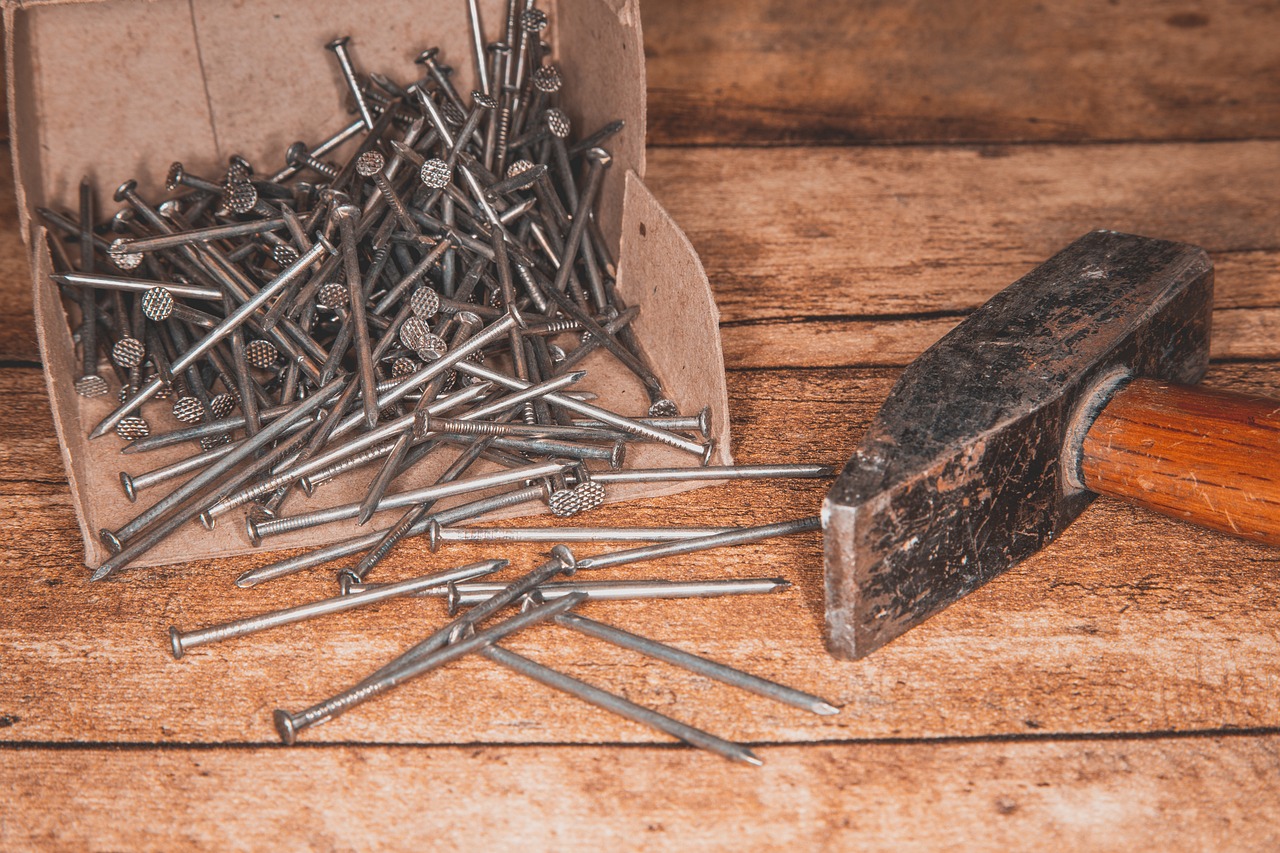
Applying Padding
When it comes to creating a footstool that not only looks fantastic but also offers comfort, the choice and application of padding are absolutely essential. Think of padding as the cozy blanket that wraps around your footstool, providing that extra layer of comfort and support. Without it, your footstool might feel more like a hard block than a plush resting spot for your feet. So, how do you choose and apply padding effectively? Let's dive in!
First, consider the type of padding you want to use. There are several options available, each with its own unique characteristics:
- Foam: This is the most common choice for footstools. It comes in various densities, which affect comfort and durability. High-density foam provides excellent support, while lower-density foam might feel softer but may wear down quicker.
- Batting: Often used in conjunction with foam, batting adds a soft layer over the foam. It gives a rounded, softer edge to your footstool, enhancing its overall appearance.
- Memory Foam: If you're looking for that luxurious feel, memory foam is the way to go. It molds to your feet, providing exceptional comfort, but can be pricier than traditional foam.
Once you've selected the right type of padding, it's time to apply it. Start by measuring the dimensions of your footstool to ensure you cut your padding accurately. You want it to fit snugly without any overhang. A general rule of thumb is to add about 1-2 inches to the dimensions of the top of your footstool for a plush look.
Next, cut your padding to size. If you're using foam, a sharp utility knife works best for clean edges. For batting, scissors will do the trick. After cutting, lay the padding on top of your footstool frame and secure it in place. You can use spray adhesive for a strong hold or simply staple it down if you're using a wooden frame. Be sure to pull the padding taut to avoid any lumps or uneven areas.
Finally, consider layering different types of padding for the ultimate comfort experience. For instance, you can use a firm foam base topped with a layer of softer batting or memory foam. This combination not only enhances comfort but also provides a visually appealing look when upholstered. Remember, the goal is to create a footstool that invites you to kick back and relax!
Q: How thick should the padding be for my footstool?
A: The thickness of the padding can vary based on personal preference, but generally, a thickness of 2-4 inches is ideal for a comfortable footstool.
Q: Can I use old cushions for padding?
A: Absolutely! Old cushions can be repurposed as padding. Just ensure they are still in good condition and provide the support you need.
Q: How do I clean the padding?
A: If you're using foam, you can spot clean it with a mild detergent and water. Batting may not be washable, so consider using a fabric cover that can be removed and washed.

Finishing Touches
When it comes to your DIY footstool, the can truly make or break the overall aesthetic of your piece. Think of these final steps as the icing on the cake; they’re what will transform your footstool from a simple piece of furniture into a stunning focal point in your living room. So, how do you elevate your footstool to the next level? Let’s dive into some creative ideas!
First and foremost, consider the color and finish of your footstool. Whether you choose to paint, stain, or leave the wood natural, the finish can dramatically alter its appearance. For instance, a sleek, glossy paint can give a modern vibe, while a rustic stain can add warmth and character. If you're feeling adventurous, try a two-tone effect to create contrast and visual interest. When selecting colors, think about your existing decor; complementary colors can tie the room together beautifully.
Next, adding decorative elements can enhance your footstool's design significantly. This could be anything from trims and tassels to buttons or decorative legs. For example, adding a row of decorative nails along the edges can give your footstool a chic, tailored look, while adding a fun fabric or colorful buttons can inject personality. Don't shy away from experimenting—sometimes the quirkiest ideas turn out to be the most visually striking!
Another important aspect is protection. After all that hard work, you want your footstool to last! Consider applying a protective sealant to the wood to guard against scratches and spills. If you’ve chosen fabric for your upholstery, look for a fabric protector that repels stains and moisture. Regular cleaning and maintenance will also extend the life of your footstool. For fabric, a simple vacuum can do wonders, while wood can often be wiped down with a damp cloth.
To wrap it all up, the finishing touches are your opportunity to let your personality shine through your creation. Don’t be afraid to think outside the box and incorporate elements that resonate with you. Remember, your footstool isn’t just a functional piece; it’s also a reflection of your style and creativity. So go ahead, make those final adjustments, and enjoy the satisfaction of your beautiful, customized footstool!
- What type of fabric is best for upholstering a footstool? The best fabric depends on your lifestyle. If you have pets or children, consider durable, stain-resistant fabrics like canvas or microfiber.
- How can I make my footstool more comfortable? Adding a thick layer of foam padding can significantly enhance comfort. Choose a density that feels good underfoot.
- Is it difficult to paint or stain wood? Not at all! Just ensure you prep the surface properly by sanding it down, and follow the instructions on your chosen paint or stain for the best results.
- Can I add storage to my footstool? Absolutely! You can create a hinged top or a pull-out drawer to keep items neatly tucked away.

Adding Decorative Elements
When it comes to personalizing your DIY footstool, is where the magic happens! These finishing touches not only enhance the aesthetic appeal but also reflect your unique style and personality. Think of your footstool as a blank canvas; the decorative elements are the vibrant colors that bring it to life. From chic trims to bold buttons, these details can turn an ordinary piece into a stunning focal point in your living room.
One of the simplest ways to add flair is by incorporating trims. Whether you choose a sleek ribbon or a textured fringe, trims can define the edges of your footstool and create a polished look. For example, a contrasting color can draw attention to the shape and structure, while a matching trim can create a seamless appearance. Don't underestimate the power of color! It can completely transform your footstool's character.
Another fabulous option is to include decorative buttons or tufting. This technique not only adds visual interest but also creates a cozy, inviting feel. Imagine sinking your feet into a footstool that features plush tufted buttons, making it a perfect spot to relax after a long day. You can choose buttons that match your upholstery or go for something bold that stands out. The key is to find a balance that works with your overall decor.
Additionally, consider upgrading the legs of your footstool. Instead of standard wooden legs, you can explore options like ornate metal legs or even colorful painted ones. This small change can have a big impact, giving your footstool a unique character that aligns with your living room style. Remember, the legs are like the foundation of a house; they support everything else, so make them count!
Finally, don't shy away from adding personal touches. Whether it's a fabric swatch that holds sentimental value or a quirky decoration that sparks joy, these elements can make your footstool truly yours. You might even consider using stencils to add a design or pattern that resonates with your taste. The possibilities are endless!
In summary, the decorative elements you choose for your footstool can elevate its design and create a piece that is not only functional but also a true reflection of your style. So, unleash your creativity and let your footstool shine!
- What types of decorative elements can I use? You can use trims, buttons, decorative legs, stencils, and even personal items that resonate with you.
- How do I attach decorative elements? Depending on the element, you can use fabric glue, a staple gun, or sew them on for a more secure attachment.
- Can I change the decorative elements later? Absolutely! You can always update or refresh the decorative elements as your style evolves.
- Are there any tips for choosing colors? Consider the color palette of your living room. Choose colors that either complement or contrast your existing decor for a cohesive look.

Protecting Your Footstool
Once you've invested time and effort into creating your DIY footstool, it’s essential to ensure that it remains in pristine condition for years to come. Just like any piece of furniture, your footstool will be subject to wear and tear, so taking some preventive measures can make a world of difference. Think of it as putting on a protective layer of armor to keep your creation safe from the daily battles of life!
First and foremost, consider applying a high-quality sealant or protective finish to the wooden parts of your footstool. This step is crucial for preventing scratches, moisture damage, and stains. A good sealant will not only enhance the wood's natural beauty but also provide a barrier against spills. When choosing a sealant, look for options that are specifically designed for furniture to ensure durability. Here’s a quick comparison of some popular sealants:
| Sealant Type | Durability | Finish | Drying Time |
|---|---|---|---|
| Polyurethane | High | Glossy or Satin | 2-4 hours |
| Varnish | Medium | Matte or Glossy | 1-2 hours |
| Shellac | Low | Glossy | 30 minutes |
Next, let’s talk about the upholstery. Fabrics can be magnets for dirt and stains, especially if you have pets or children. To keep your footstool looking fresh, consider using a fabric protector spray. This product creates a protective barrier that repels liquids and prevents stains from setting in. Just imagine your footstool surviving a juice spill without a trace left behind! When applying the spray, make sure to follow the manufacturer's instructions for the best results.
Additionally, regular maintenance is key. Give your footstool a quick vacuum every week to remove dust and debris that can wear down the fabric over time. If you notice any stains, tackle them immediately with a gentle cleaner suitable for your upholstery type. You wouldn’t let a tiny scratch on your car go unchecked, right? Treat your footstool with the same care!
Lastly, consider the placement of your footstool. Avoid placing it in direct sunlight, as UV rays can fade colors and degrade materials over time. If you can, position it in a shaded area or use curtains to filter sunlight. Think of it as giving your footstool a cozy spot away from the harsh elements that could wear it down.
By taking these simple yet effective steps, you can keep your DIY footstool looking as stunning as the day you finished it. Remember, a little protection goes a long way in preserving the beauty and functionality of your handmade masterpiece!
- How often should I clean my footstool? It's best to vacuum your footstool weekly and spot clean any stains as soon as they occur.
- Can I use any fabric protector spray? Make sure to choose a fabric protector that is compatible with the material of your footstool's upholstery.
- Is it necessary to seal the wood? Yes, sealing the wood helps protect it from moisture, scratches, and stains, extending the life of your footstool.
Frequently Asked Questions
- What materials do I need to create a DIY footstool?
To create a DIY footstool, you'll need wood for the frame, padding for comfort, and upholstery fabric for the covering. Additionally, tools like a saw, drill, stapler, and measuring tape are essential for the construction process. Don't forget screws and wood glue for assembly!
- How do I measure for my footstool design?
Measuring correctly is key! Start by determining the height and width that will fit comfortably in your space. Sketch your design on paper, including dimensions, to visualize how it will look. Remember, a well-proportioned footstool enhances both functionality and aesthetics!
- Can I incorporate storage into my footstool?
Absolutely! Adding storage is a fantastic way to make your footstool even more functional. You can create a hinged top or a lift-out compartment to store blankets, magazines, or other items, keeping your living room tidy while adding style.
- What upholstery fabric should I choose?
Choosing the right upholstery fabric is crucial for both durability and style. Look for fabrics that are easy to clean and resistant to wear, such as canvas or microfiber. Consider colors and patterns that complement your living room decor to create a cohesive look!
- How can I protect my footstool from damage?
To keep your footstool looking great, consider applying a sealant to protect the wood and upholstery. Regularly clean it with a soft cloth and follow the care instructions for your specific fabric. This will help maintain its beauty and extend its lifespan!
- What are some finishing touches I can add?
Finishing touches can really make your footstool pop! Think about adding decorative elements like trims, buttons, or unique legs. These small details can significantly enhance the overall look and give your footstool a personal touch.


















